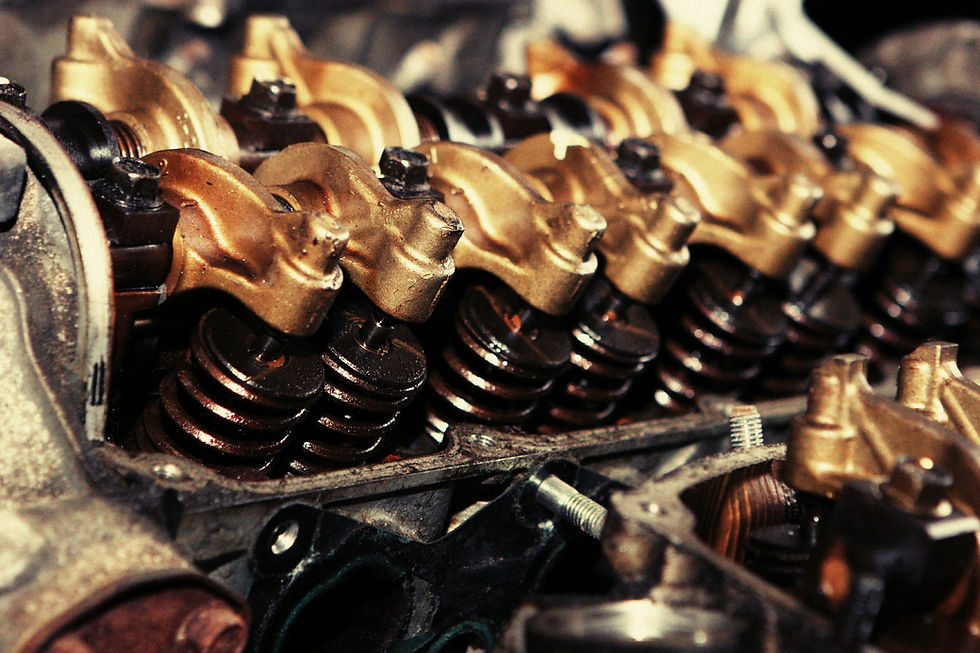How do I know which brake fluid to use DOT 3 or DOT 4?
- Autolast Ghana

- Dec 20, 2022
- 6 min read
Updated: May 1, 2025
Understanding Brake Fluid in Your Hydraulic Braking System
The hydraulic braking system in every vehicle, from small cars to large commercial trucks and motorcycles, relies critically on brake fluid. Regular motorists often use DOT 3 brake fluid, the most common variety. It is generally appropriate for vehicles that do not experience sudden or extremely harsh braking demands. However, for vehicles subjected to more rigorous braking, such as racing cars and police cars, DOT 4 is more frequently specified due to its higher boiling point. While DOT 4 and DOT 3 brake fluids are compatible and can coexist within the brake lines of a vehicle, it's important to note that the reverse is not the manufacturer's recommendation.
The variable boiling performance you'll get from mixing DOT 3 and DOT 4 shouldn't inherently cause immediate harm, as these braking fluids are chemically compatible. Therefore, combining them in an emergency might not lead to immediate system failure. However, to ensure optimal and predictable performance of your hydraulic braking system, professional servicing using a single, specified fluid type is always the best practice. There isn't a vast performance distinction in ideal conditions between the two, but their behavior changes significantly under stress.
Maintaining an adequate level of clean brake fluid is paramount for the safe operation of any vehicle. Whether you're operating a compact car, a substantial commercial truck navigating challenging terrains, or a high-performance motorcycle demanding precise control, the integrity of the brake fluid is non-negotiable for a responsive hydraulic braking system.
Glycol ether-based DOT 4 brake fluids are formulated with the addition of borate esters to significantly enhance their performance characteristics. The inclusion of these esters allows DOT 4 fluids to achieve superior wet boiling points and dry boiling points compared to DOT 3. The wet boiling point is a crucial metric as it indicates the fluid's performance after it has inevitably begun to absorb moisture over time, which is a natural characteristic of glycol-based fluids.
All DOT 4 fluids available on the market are classified as synthetic brake fluids and share the same fundamental chemical make-up, consisting of a mixture of glycol and borate ester. Since the wet boiling points and dry boiling temperatures of all DOT 4 braking fluids adhere to the same stringent standards, you can generally use any brand of DOT 4 according to your preferences and the manufacturer's recommendations.
The broader category of glycol-based braking fluids encompasses several number subcategories: 3, 4, 5, and 5.1. While a single, universal brake fluid recipe doesn't exist across these categories, they are all mandated to adhere to a strict set of criteria established by government regulations. These standards dictate various critical properties, including pH levels, chemical stability under different operating conditions, tolerance to water contamination (though all will eventually absorb moisture), and resistance to oxidation, all of which are vital for the longevity and reliability of the hydraulic braking system and the integrity of the brake lines.
Even under conditions of high braking pressures, DOT 3 brake fluid is engineered to provide a dependable and secure braking experience for regular driving conditions. You typically won't need to be overly concerned about this brake fluid boiling or thickening excessively at typical operating high or low temperatures encountered in everyday use. However, its performance envelope is less forgiving under extreme heat or after significant moisture absorption compared to DOT 4.
When DOT 3 brake fluid is specifically required by the vehicle's manufacturer, it is crucial to adhere to this recommendation to ensure the hydraulic braking system operates as intended. It's important to remember that DOT 3 fluid is inherently hygroscopic, meaning it will naturally absorb moisture from the surrounding atmosphere. This absorbed moisture progressively lowers the fluid's wet boiling point, potentially compromising braking performance, especially under hard braking or in high performance vehicles that generate significant heat in the braking system. Once a brake fluid bottle is opened, it's imperative to tightly reseal the cap immediately to minimize water contamination and preserve the product's efficacy.
While DOT 3 might be suitable for standard applications, high performance vehicles often demand the superior thermal characteristics and resistance to moisture absorption offered by DOT 4 or even higher-specification fluids to maintain consistent and reliable braking performance under extreme conditions. The integrity of the brake lines and the fluid within them is paramount in such vehicles.
This DOT 3 brake fluid may be used to top off the clutch and braking systems of a wide range of vehicles, including heavy-duty commercial vehicles, motorcycles, 4WDs, and standard passenger automobiles, where specified by the manufacturer. Additionally, this fluid can find applications in the hydraulic braking system of various types of machinery used in mining, agriculture, and construction, provided it meets the manufacturer's fluid specifications. However, for sustained heavy-duty use and in environments where high temperatures are common, fluids with a higher boiling point are generally preferred to ensure consistent braking performance and prevent vapor lock within the brake lines.
Can I substitute DOT 4 with DOT 3?

If you wish to move up from DOT 3, you can utilize DOT 4. Due to its high boiling point, DOT 4 is perfect for use in police cars, racing automobiles, and motorcyclists that participate in rigorous breaking. Additionally, it works with vehicles that have anti-lock brakes. If the automaker recommends using DOT 4 brake fluid, it is wise to do so.
How do I choose the right brake fluid?
In the owner's handbook, you can always find information about the brake fluid that is suggested for your particular car. The brake fluid reservoir lid, which is located someplace close to the brake booster, may also occasionally have this information printed on it. Anyhow, moving from DOT3 to DOT4 fluid is a good idea because it will raise the boiling point of the fluid and make the braking system more resilient to heavy loads. However, it is not advised to reverse the process.
Compressibility is not intended for brake fluid. Therefore, applying pressure to the brake pedal will cause the air bubbles in any braking fluid to condense, which will cause the car to
have a harder time slowing down.
This is dependent on the braking fluids you have combined. Nothing radically different will occur in the case of DOT3 and DOT4, other from differences in boiling point. Since DOT3 has a lower boiling point than DOT4, adding it to a DOT4-based braking system might cause the brakes to fade more quickly while stopping large loads. And when things are going south, you don't want it. Additionally, both of these braking fluids are glycol-based and cannot be mixed with the silicone-based, more recent DOT5 version.
Are DOT 5 brake fluids recommended?
DOT 5 brake fluids have a few disadvantages as well. When warmed, it swells considerably, and the additives can evaporate at room temperature, enhancing how spongy it feels. This fluid cannot be used in systems that have previously utilized glycol-based fluids unless you flash it and replace the seal. In addition, because silicone fluids are more viscous, they are incompatible with anti-lock brakes. Silicone braking fluids begin to compress at temperatures between 300- and 350-degrees Fahrenheit, as opposed to glycol fluids, which begin to compress as they approach their boiling points.
Standing on the brakes while rounding turns might generate enough heat to induce brake fade if you enjoy driving your car around winding country roads for some light treatment. A little bit of overzealousness might result in you cutting straight through a turn and entering the woods.
The brake fluid may heat up quickly when you drive your car aggressively up hills or when towing a trailer and brake often. The last thing you want to happen up a hill with a trailer is to lose the ability to brake your car if it heats up too much and begins to boil. Therefore, it is crucial to have a boiling point that is as high as feasible.
What occurs if the incorrect DOT brake fluid is used?
This is dependent on the braking fluids you have combined. Nothing radically different will occur in the case of DOT3 and DOT4, other from differences in boiling point. Since DOT3 has a lower boiling point than DOT4, adding it to a DOT4-based braking system might cause the brakes to fade more quickly while stopping large loads. And when things are going south, you don't want it. Additionally, both of these braking fluids are glycol-based and cannot be mixed with the silicone-based, more recent DOT5 version.
















Comments